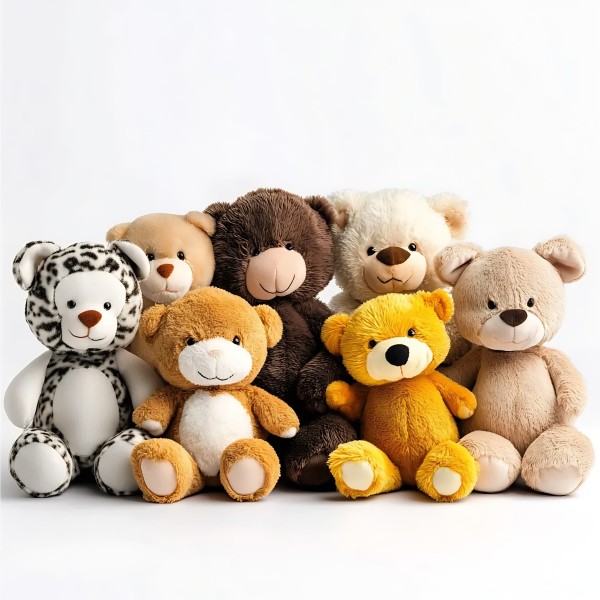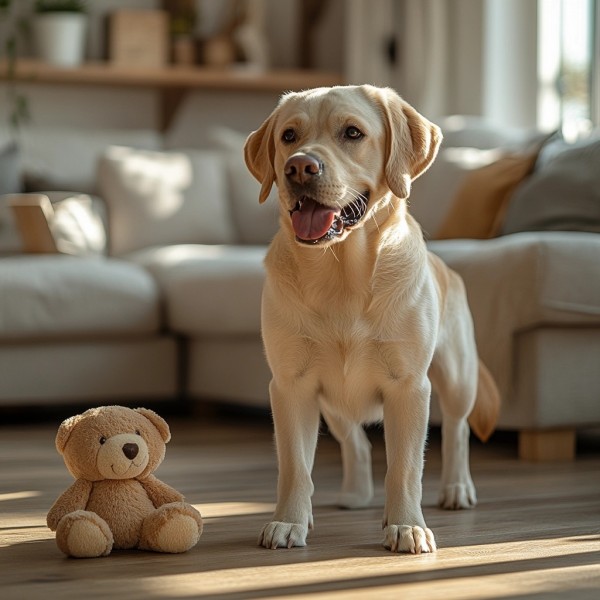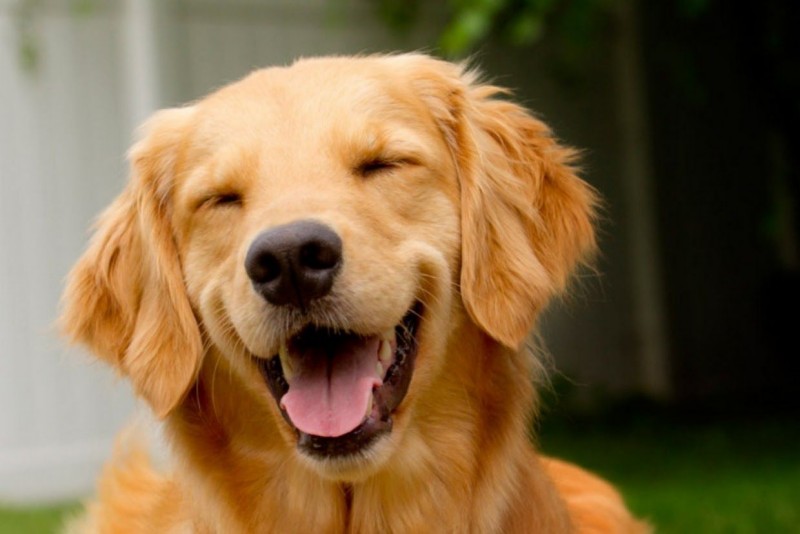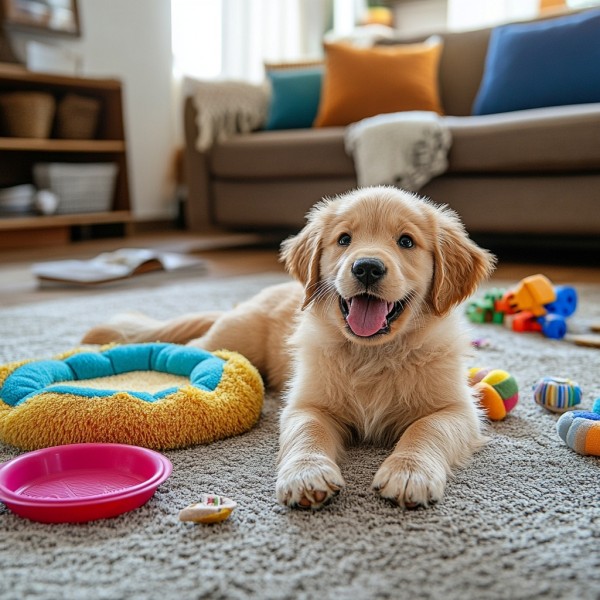Exploring the world of dog training toys, we delve into the heartwarming tales of pets transformed through play and learning. Join us as we share real-life stories of how these innovative toys have brought joy, intelligence, and improved behavior to our furry companions.
The Importance of Engagement: How Dog Training Toys Boost Canine Learning
Dogs, much like humans, thrive on engagement and interaction. Engaging toys aren’t just a source of fun; they’re an essential tool in a dog’s training arsenal. By using interactive dog training toys, you’re not just entertaining your furry friend, but also helping them learn and develop new skills.
These toys provide a mental challenge, keeping your dog’s brain active and preventing boredom. The process of solving puzzles or playing games with these toys stimulates their natural instincts, such as hunting or foraging. This mental exercise is crucial for maintaining a well-rounded and happy dog.
Furthermore, interactive play helps reinforce commands and behaviors during training sessions. Dogs learn best when they’re having fun, so incorporating a toy that encourages play while teaching can be incredibly effective. Whether it’s teaching your pup to sit, stay, or fetch, the right training toy can make the process more enjoyable and memorable for both you and your dog.
In addition to reinforcing training, engaging with these toys can also improve your dog’s problem-solving abilities. As they manipulate and interact with the toys, they’re essentially learning how to think creatively, which can translate to better behavior in everyday life.
Not only do these toys help in cognitive development, but they also contribute to your dog’s physical well-being. Many training toys are designed for interactive games that promote exercise and movement, which is essential for maintaining a healthy weight and reducing the risk of obesity.
Lastly, using dog training toys can strengthen the bond between you and your dog. Sharing a playful interaction is a bonding experience that can deepen the connection and create cherished memories together. Engaging your dog with these toys is more than just a training tool; it’s a way to enrich their life and yours.

Interactive Fun with a Purpose: Exploring the Best Dog Training Toys
Interactive fun is at the heart of the best dog training toys, designed not just to keep your pup entertained but to also serve a purpose. Think of a treat-dispensing puzzle toy that’s not only fun to play with but also encourages your dog to work for their rewards.
The best of these toys are often multifunctional, offering a variety of challenges that cater to different stages of your dog’s training journey. From simple clicker toys that reinforce commands to complex maze-like puzzles, these gadgets keep your dog’s mind engaged and their learning curve steep.
Many top dog training toys are crafted with durability in mind, ensuring they can withstand the rigorous play of a energetic canine. Look for toys made from robust materials like heavy-duty rubber or sturdy plastic that can last through countless games.
What sets the best dog training toys apart is their ability to adapt to your dog’s changing needs. Some toys grow with your dog, starting as simple tug-of-war playthings and evolving into complex puzzles as your pet’s intelligence and coordination develop.
Another hallmark of excellence in dog training toys is their safety features. Toys with non-toxic finishes, no small parts that could be swallowed, and easy-to-grip handles make them perfect for playtime while keeping your pup safe.
Lastly, the best dog training toys are those that you, as the owner, can enjoy using too. They should be easy to clean, store, and handle, making the training process a seamless and enjoyable experience for both you and your four-legged companion.

Top Picks for Brainy Pups: Smart Toys That Teach and Entertain
Smart toys designed for brainy pups are a game-changer in the world of dog entertainment. Take, for instance, a toy that mimics the scent of a hunt, which not only captures your dog’s natural instincts but also challenges them to use their sense of smell.
One top pick is the interactive treat puzzle toy, which can be filled with kibble or treats. Your dog will have to figure out how to manipulate the toy to release the treats, which is a fun way to engage their problem-solving skills.
Another fantastic option is the treat-dispensing ball. This toy is perfect for active dogs and can be used both indoors and outdoors. It’s a great way to encourage your dog to move and play while working for their snacks.
Smart toys also come in the form of educational chew toys. These aren’t just for chewing; they have textures and patterns that help stimulate your dog’s mouth and teeth, and some even have hidden compartments for treats, encouraging them to use their paws and nose.
For dogs who are more visually stimulated, a toy with a bright, moving part can be irresistible. These toys can be made to bounce, wiggle, or even light up, providing a visual treat that captures your pup’s attention and gets them moving.
Interactive toys that connect with your smartphone are also a hit. They can track your dog’s playtime and even send you updates on how they’re doing, turning playtime into a way to stay connected even when you’re not home.

Durability and Safety: Choosing the Right Materials for Your Furry Friend
When selecting toys for your furry friend, durability and safety are paramount. Opt for toys made from heavy-duty materials like durable rubber or sturdy plastic, which can stand up to the relentless chewing of a determined dog.
Non-toxic materials are essential, especially for toys that are ingested during play. Look for toys that have been tested and certified as safe for your pet, free from harmful chemicals that could pose a risk to your dog’s health.
Consider the size of the toy in relation to your dog’s mouth and teeth. Toys that are too small could be a choking hazard, while those that are too large may not provide the desired chewing or mental stimulation.
To ensure a toy is safe, check for any sharp edges or small parts that could break off and cause injury. Toys should be free of loose threads and strings that could easily unravel, leading to ingestion or gastrointestinal issues.
Additionally, the surface texture of the toy matters. It should be smooth and non-irritating to your dog’s skin, reducing the risk of irritation or injury during play. Soft, yet resilient materials are ideal for a comfortable chew that doesn’t hurt your dog’s gums.
Lastly, always supervise your dog when they’re using a new toy, especially if it’s a chew toy or one that might have parts that could come apart. Regularly inspect toys for signs of wear and tear, and replace them when they begin to show signs of damage. This simple maintenance practice can keep your dog safe and extend the life of their playthings.

Training Made Easy: Innovative Toys That Encourage Good Behavior
Innovative toys can make training sessions a breeze, turning them into fun and rewarding experiences for both you and your dog. A treat-dispensing ball, for example, can motivate your dog to perform tricks or commands to get their favorite snack.
Interactive puzzle toys are another gem. They challenge your dog’s mind while teaching them to follow instructions. Pups learn patience and problem-solving skills as they figure out how to access hidden treats or toys.
For dogs that need to work on their bite inhibition, soft, squishy toys that offer resistance are perfect. They help teach your dog how to control their jaw strength without causing harm.
Toys that mimic the sounds of the great outdoors, like birds or other animals, can be a great tool for training. They can help desensitize your dog to loud noises and teach them to focus on commands rather than the noise.
Another clever training aid is the clicker toy. It combines the sound of a clicker with a treat, reinforcing positive behavior. This method is particularly effective for teaching new commands or reinforcing existing ones.
Lastly, consider toys that encourage playtime with you. Toys that can be thrown, caught, or pulled can help build a stronger bond and reinforce good behavior through shared activities. These toys make training sessions feel more like playdates, keeping your dog engaged and eager to learn.

From Chewing to Fetching: A Variety of Toys for Different Skills
For dogs that love to chew, durable rubber toys or those made with tough, non-toxic materials are ideal. These can withstand the vigorous gnawing and help keep your pup’s teeth clean and healthy.
For the fetching enthusiast, a lightweight, easy-to-catch ball or a frisbee is a must-have. These toys are perfect for encouraging physical activity and improving your dog’s coordination.
If your dog is a hunter at heart, toys that simulate prey, like a tug-of-war rope or a fake squirrel, can satisfy their instinctual drive to chase and catch. They’re great for building strength and providing a mental workout.
For dogs that need to practice retrieving, a soft, plush toy with a sturdy rope attached can be a game-changer. It allows for controlled play and teaches your dog to bring objects back to you, a crucial skill for training.
For those with a knack for hiding and seeking, puzzle toys that have compartments to hide treats are perfect. They encourage dogs to use their sense of smell and problem-solving skills to find their rewards.
And for dogs who are social butterflies, interactive toys that can be played with together, like a plush ball with a bell inside, can foster bonding and teach them to play nicely with others.

How to Integrate Dog Training Toys into Your Routine
Incorporating dog training toys into your routine can be as simple as integrating them into daily activities. Start by using them during your dog’s regular exercise time to keep their energy levels in check and their minds stimulated.
Include training toys in your play sessions to add an educational element. Whether you’re throwing a ball or having a tug-of-war, introduce a new toy to keep the game interesting and reinforce learned commands.
Make use of training toys during quiet times, like when you’re watching TV or reading. This helps your dog stay engaged and can be a great way to practice new tricks or commands without distractions.
For dogs who need a mental workout, use puzzle toys during mealtime. Hide their food in these toys so they have to work for their meals, which can be a fun way to reinforce training and provide mental enrichment.
Don’t forget to use training toys during your dog’s down time. They can be placed in a quiet corner for your dog to explore and play with at their leisure, offering a great way to prevent boredom.
Remember to always supervise your dog when introducing new toys, especially if they’re prone to chewing or ingesting small parts. Regularly rotate toys to keep the routine fresh and exciting for your pup.

Customer Success Stories: Real-life Benefits of Our Training Toys
One customer shared how their dog, who was known for destructive chewing, became much more gentle after using our durable rubber toys. The toys provided a safe outlet for their chewing instincts, saving furniture and shoes.
A happy owner reported that their dog’s anxiety during thunderstorms decreased significantly after playing with our noise-reducing toys. The interactive nature of the toys helped distract the dog from the fear.
A customer with a dog that was slow to learn commands was thrilled to see progress after incorporating our clicker toys into their training sessions. The toys made the training process more engaging for both the dog and the owner.
Another customer mentioned how their dog’s cognitive skills improved after regular play with our puzzle toys. They noticed a more alert and focused behavior, which was a joy to witness.
A family with a hyperactive puppy found that our high-energy toys helped tire out their pup, leading to better sleep patterns at night. The toys became a staple in their daily routine to manage their puppy’s energy levels.
Lastly, a customer with a dog that had trouble socializing found that our interactive play toys helped their dog learn to engage with other pets. The toys provided a safe and controlled environment for social interaction, leading to more confident and well-behaved dogs.
